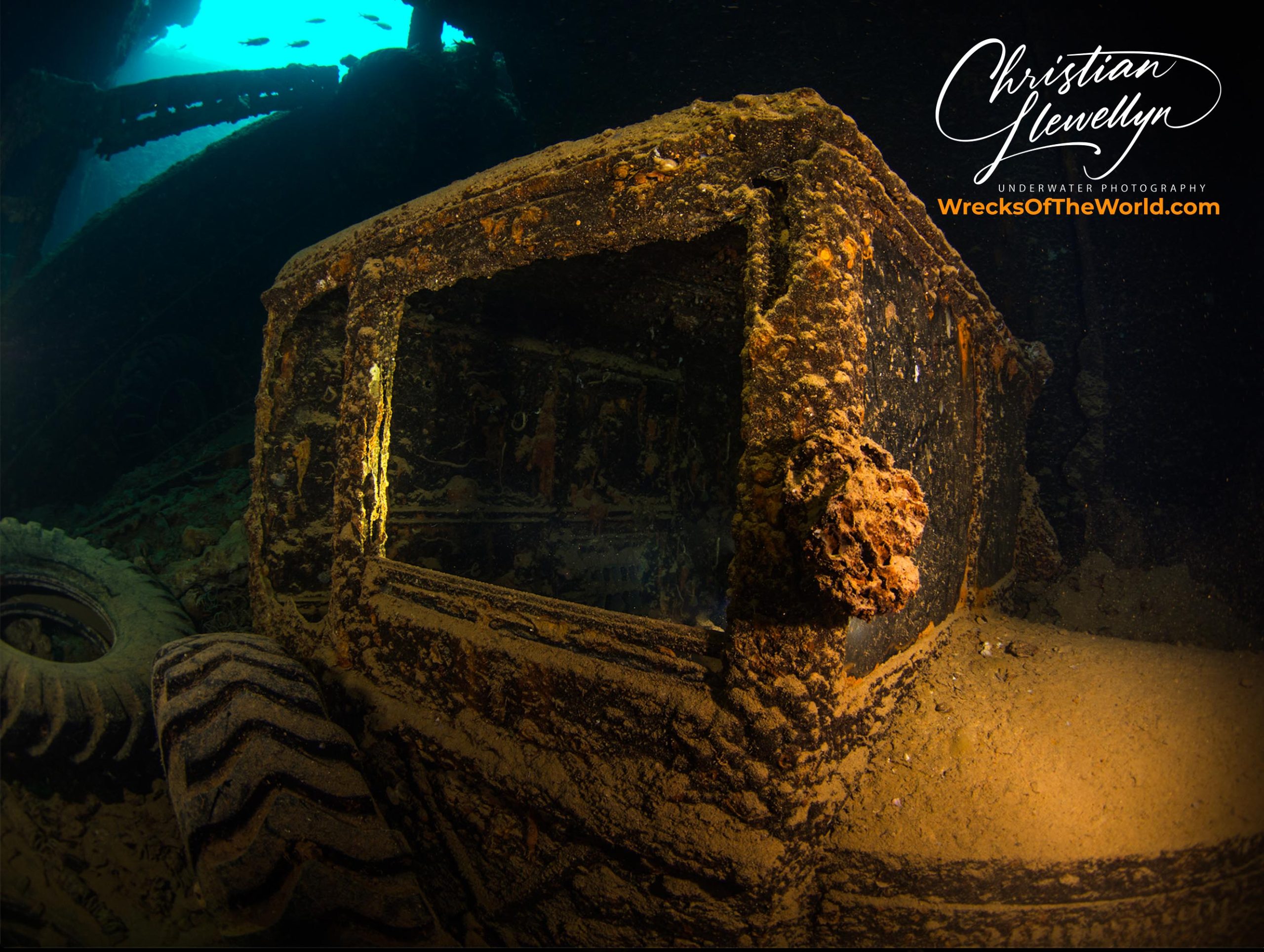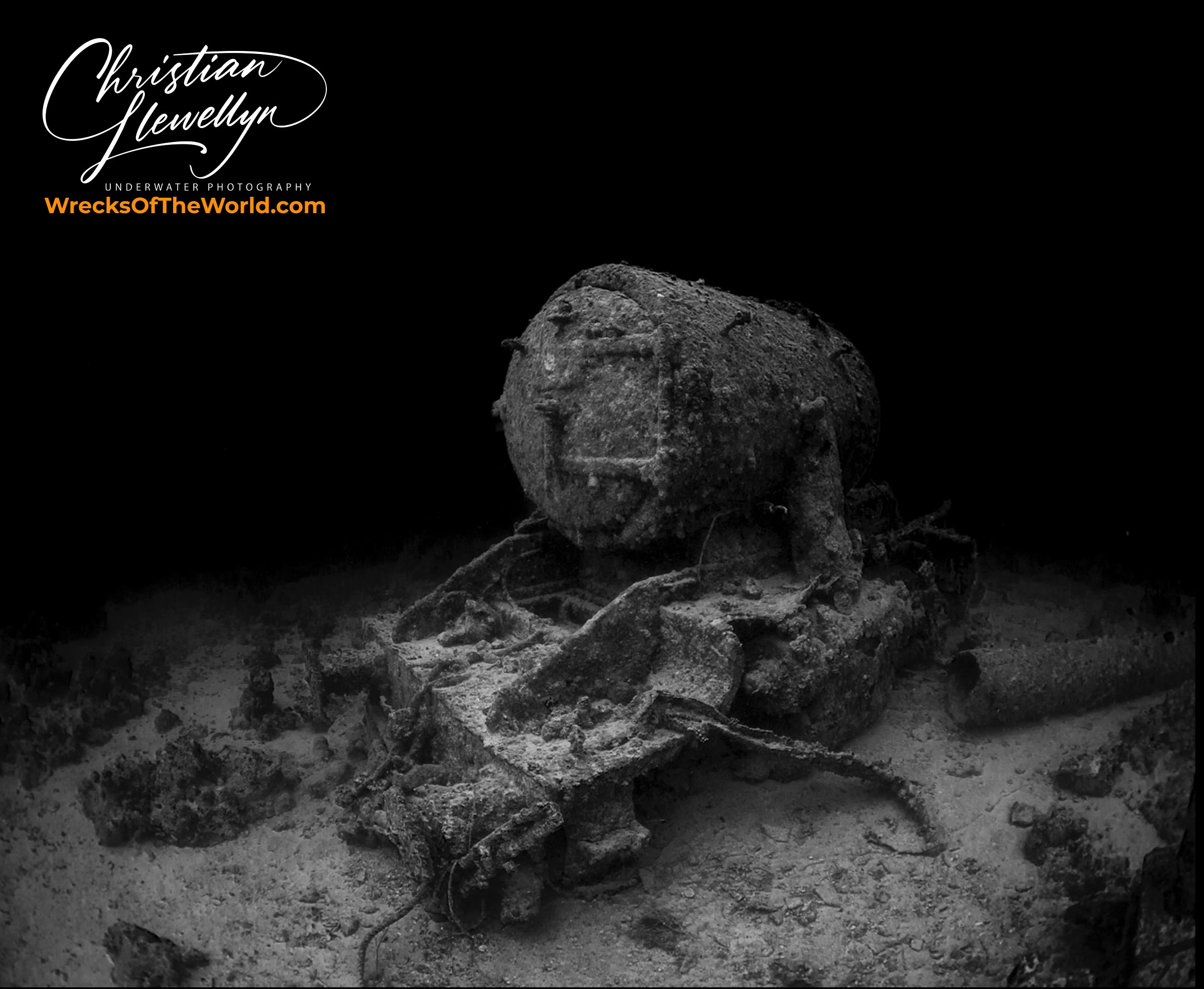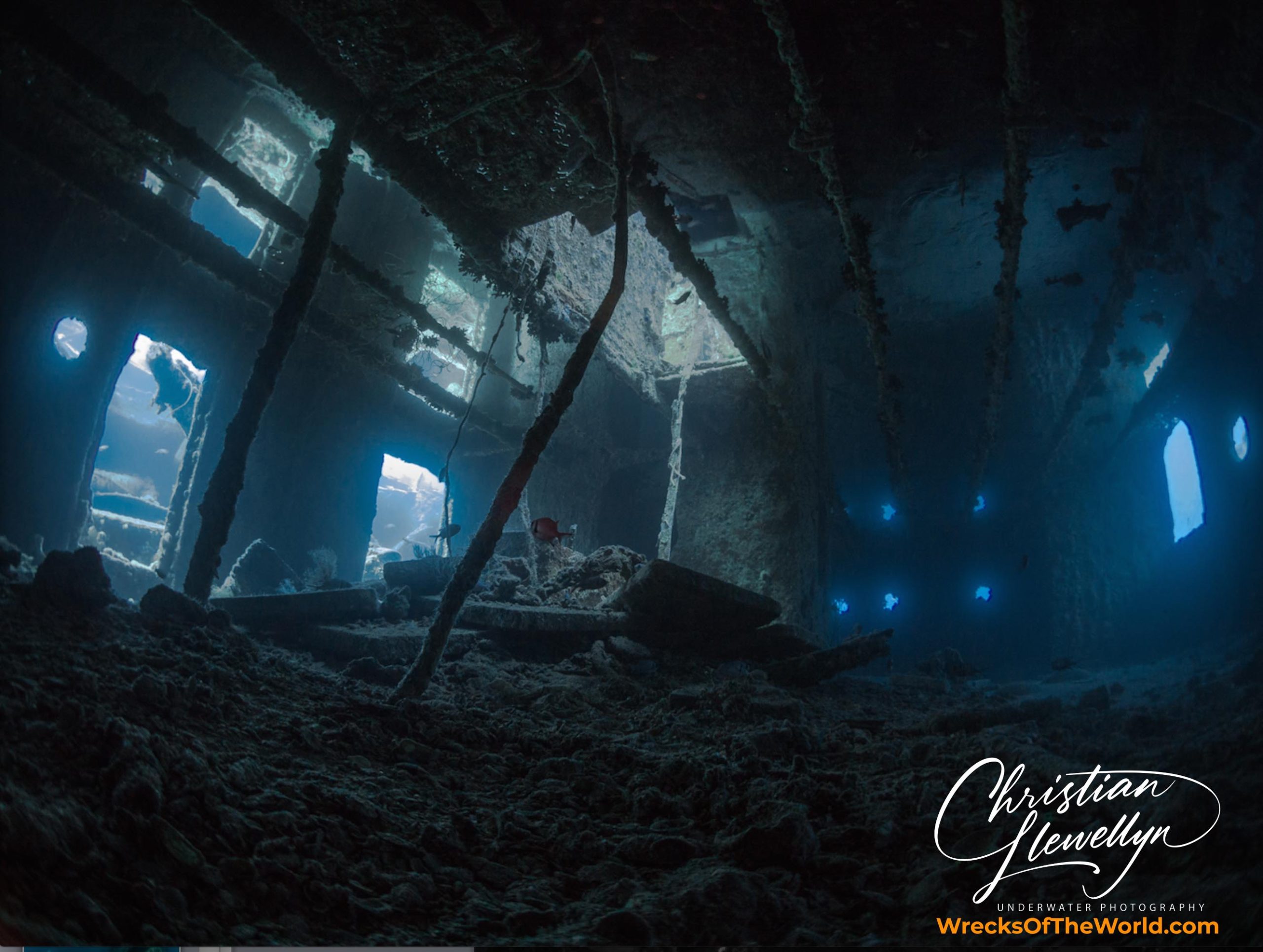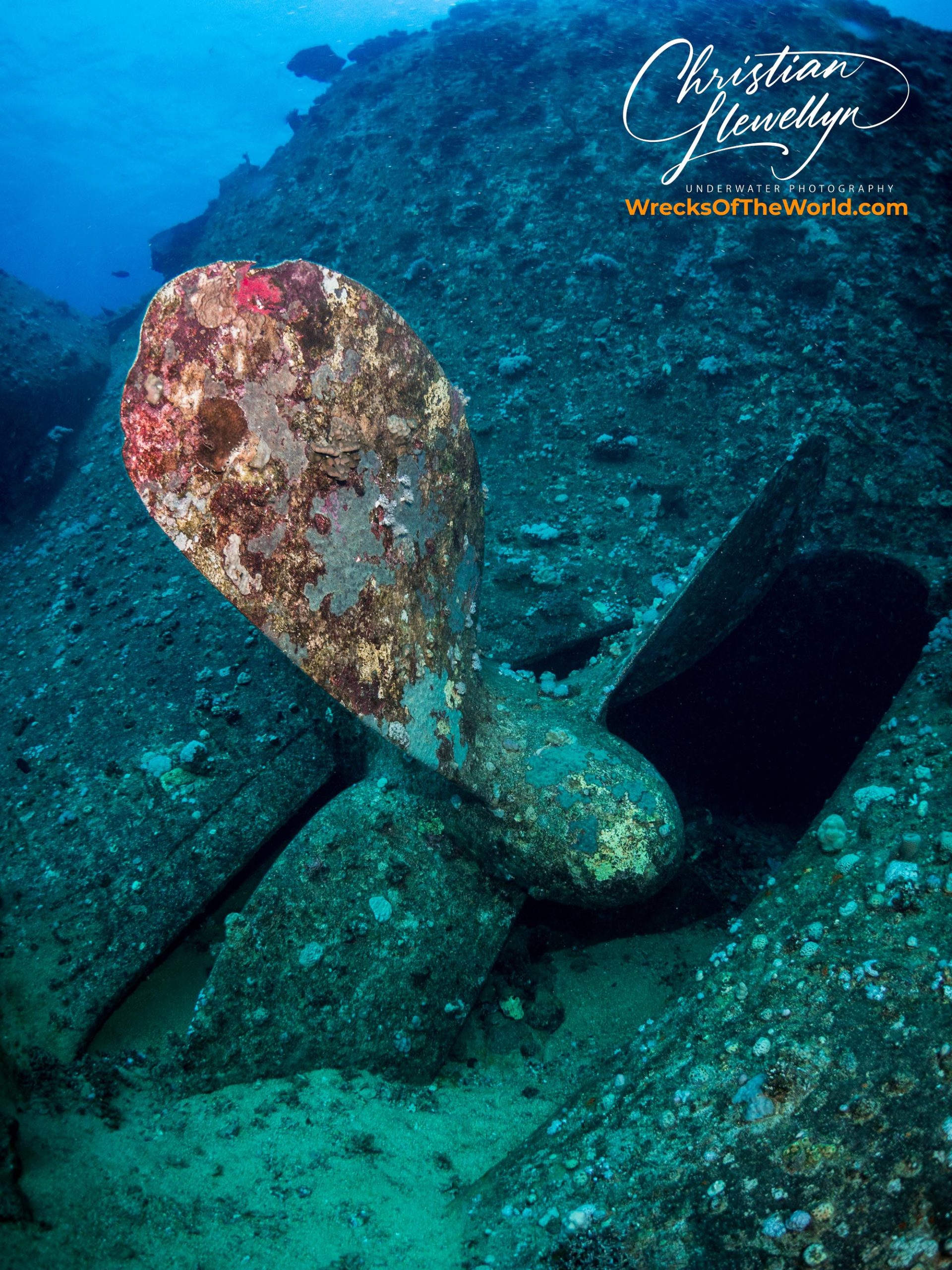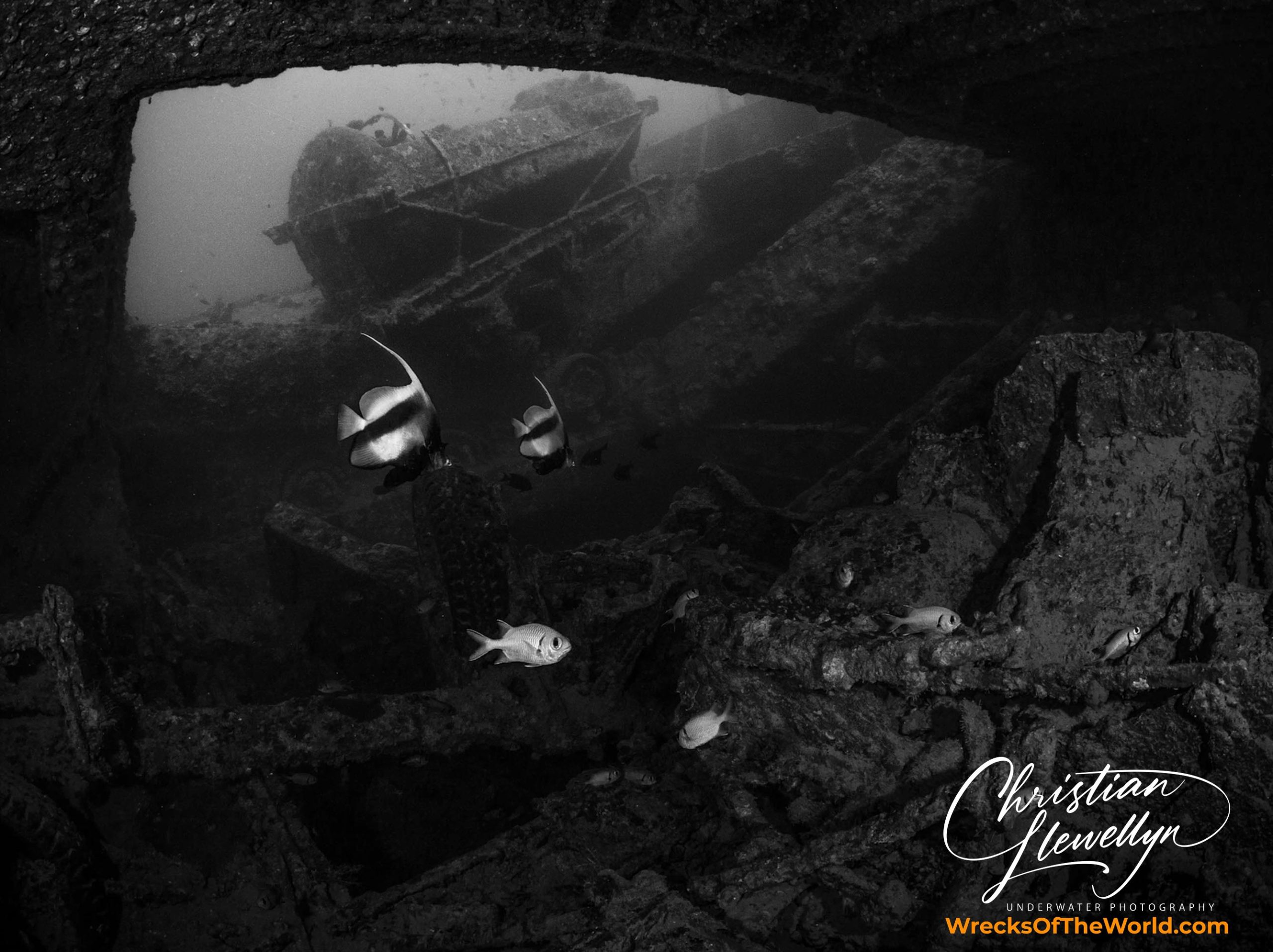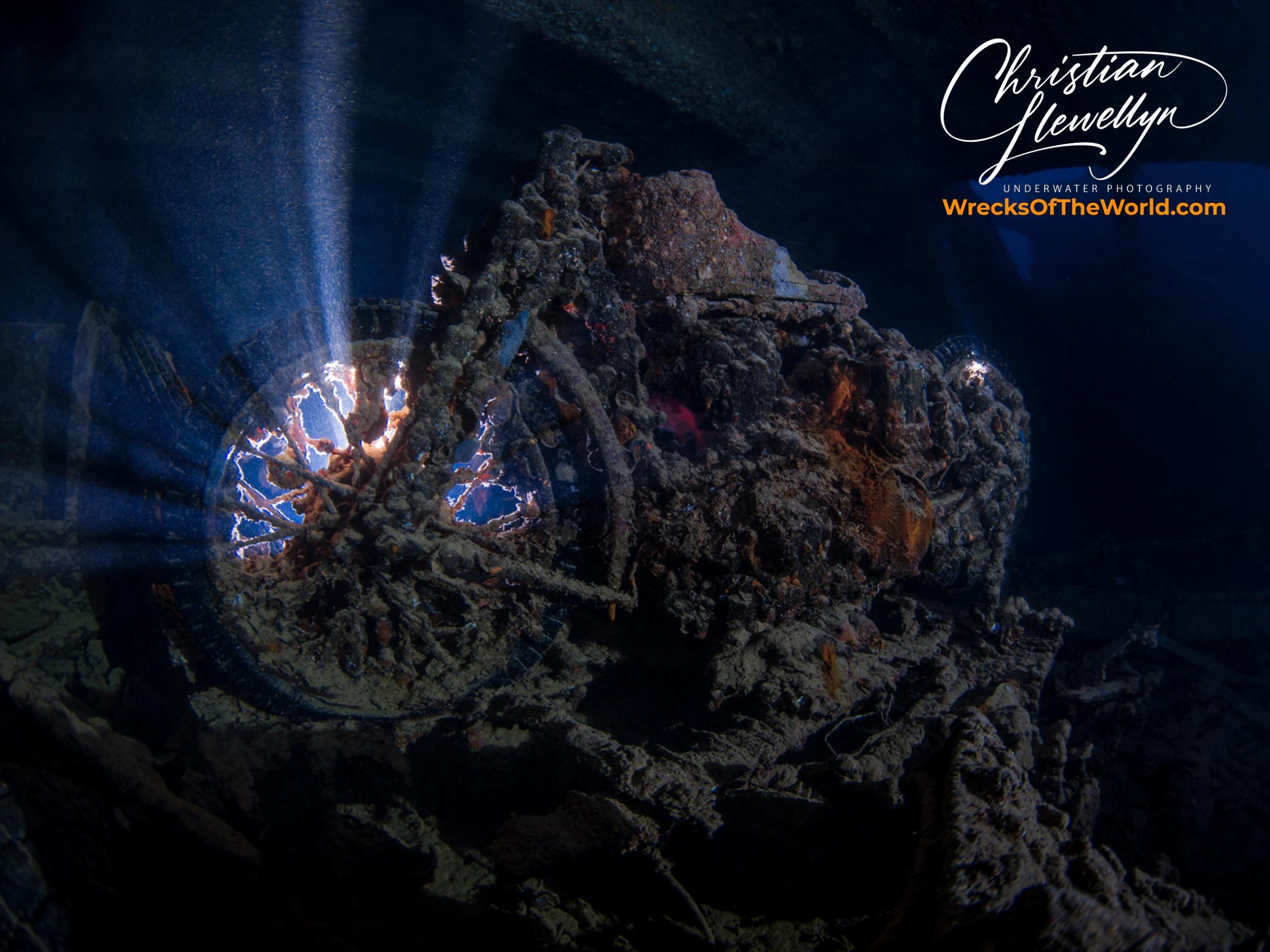Dive The SS Thistlegorm Red Sea: Egypt’s Famous Wreck
- Written:
- By Christian Llewellyn
Some of the links on this page may be affiliate links. If you click on them and make a purchase, we may earn a small commission at no extra cost to you. This helps us continue our work—thank you for your support!
Introduction to the SS Thistlegorm wreck
The SS Thistlegorm, a renowned wreck in the Red Sea, is a prime site for enthusiasts of SS Thistlegorm diving. Sunk during World War II, this ship now lies near Sharm El Sheikh, Egypt, and serves as a significant underwater attraction. It offers a unique glimpse into history, providing divers with an opportunity to explore a well-preserved snapshot of wartime logistics and machinery submerged in an aquatic environment.
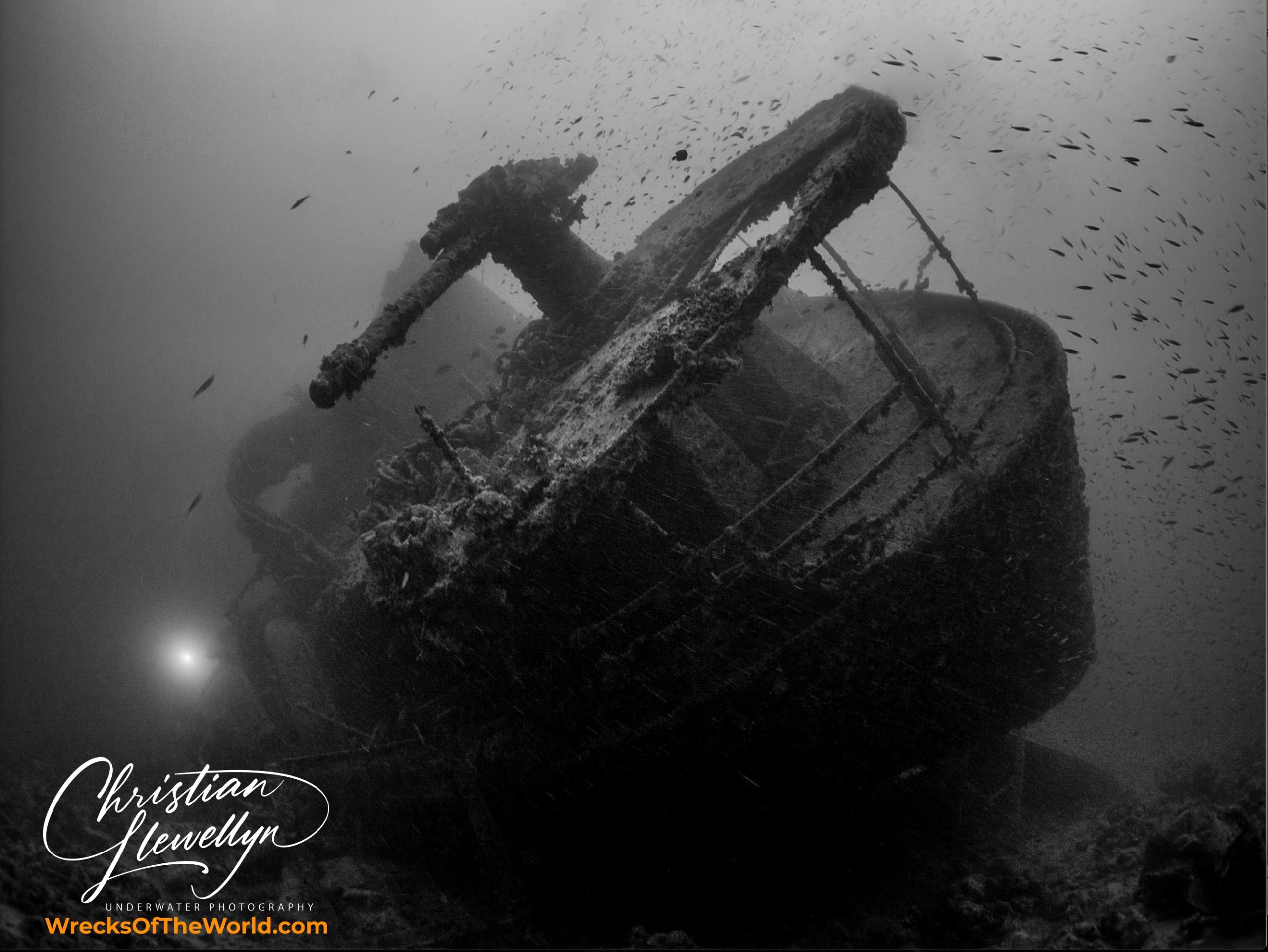
The Story Behind the SS Thistlegorm
Built in 1940 in Sunderland, North East England by Joseph Thompson & Sons, the SS Thistlegorm was an armed merchant ship designed to bolster Allied forces during World War II. Initially part of a fleet tasked with transporting essential military supplies such as vehicles, aircraft parts, and ammunition, the vessel embarked on several successful missions across the Atlantic and to the West Indies, fully equipped with defensive artillery like a 4.7-inch anti-aircraft gun. Its final voyage commenced from Glasgow on June 2, 1941, aimed for Alexandria, Egypt, loaded with crucial supplies including lorries and motorcycles destined for the British troops.
The journey of the Thistlegorm met a tragic end when it was mistakenly bombed by German Heinkel He 111 aircrafts on October 6, 1941. Positioned in Safe Anchorage Zone F of the Red Sea, the ship was hit by bombs targeting what was believed to be a troop carrier. The ensuing explosion, fueled by the ammunition onboard, caused the ship to sink rapidly, taking the lives of nine crew members. The wreck was uncovered by Jacques-Yves Cousteau in 1952 and has since evolved into a compelling dive site and an artificial reef, housing diverse marine life, including groupers and moray eels, and contributing to the biodiversity of the region.
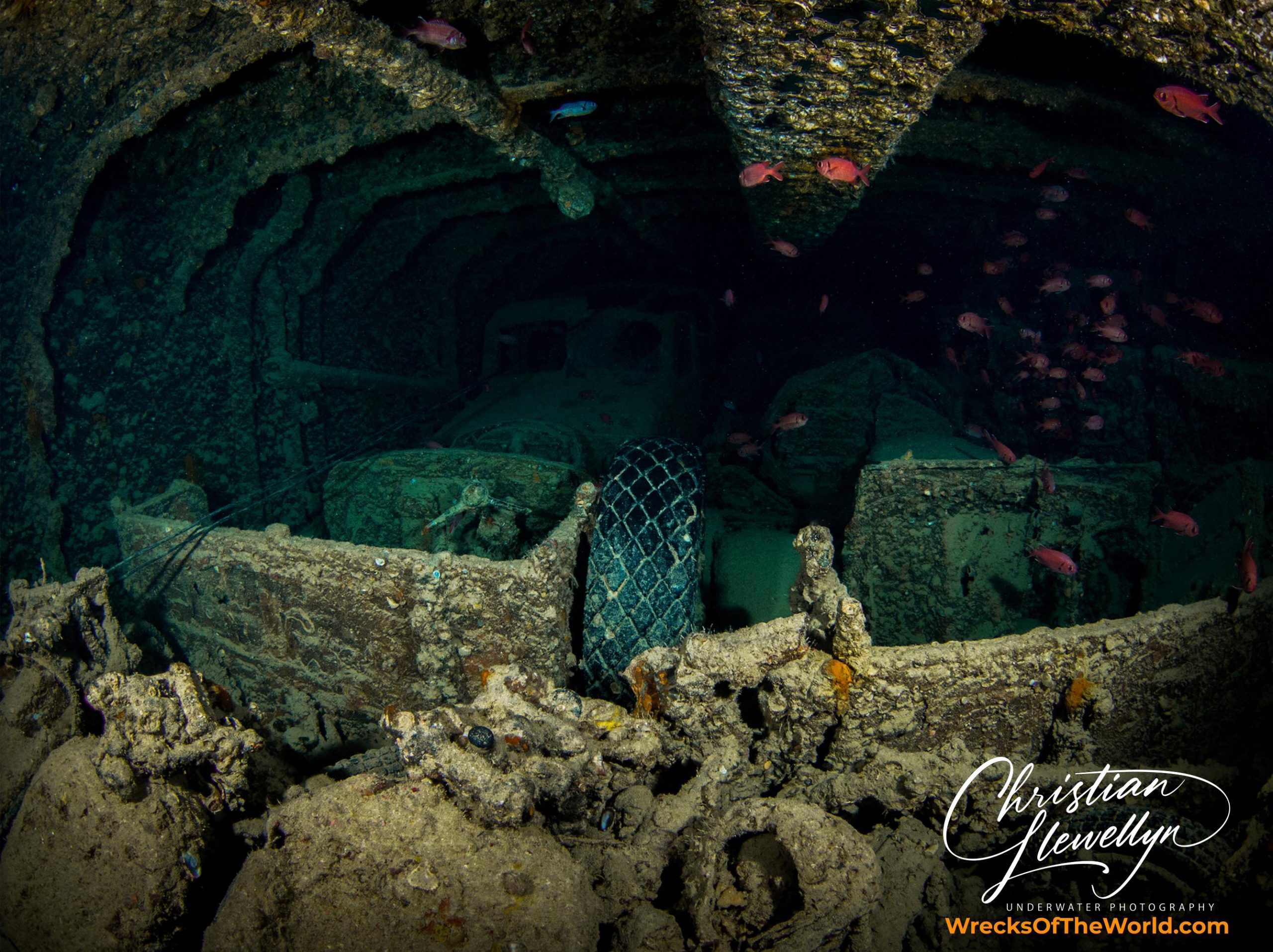
The Stats: Depth, Conditions & Accessibility
16m
Minimum Depth
30m
Maximum Depth
Boat Dive
Dive Type
30m
Visibility
Apr – Oct
Season
22°C - 28°C
Water Temp
Where Is The SS Thistlegorm?
SS Thistlegorm is located near the Sinai Peninsula in the Red Sea. It is mainly accessed by boat from Sharm el-Sheikh, which serves as the primary base for diving expeditions to this wreck. Sharm el-Sheikh, a renowned tourist city, is equipped with amenities including hotels, restaurants, and dive shops. The city has an international airport, Sharm el-Sheikh International Airport, which connects to various global destinations, facilitating the arrival of divers and tourists. Most dive trips to SS Thistlegorm are organized as part of a day trip or a liveaboard experience, with boats typically leaving early to reach the site due to its popularity and the time required to dive the site thoroughly.
My Experience Diving The SS Thistlegorm
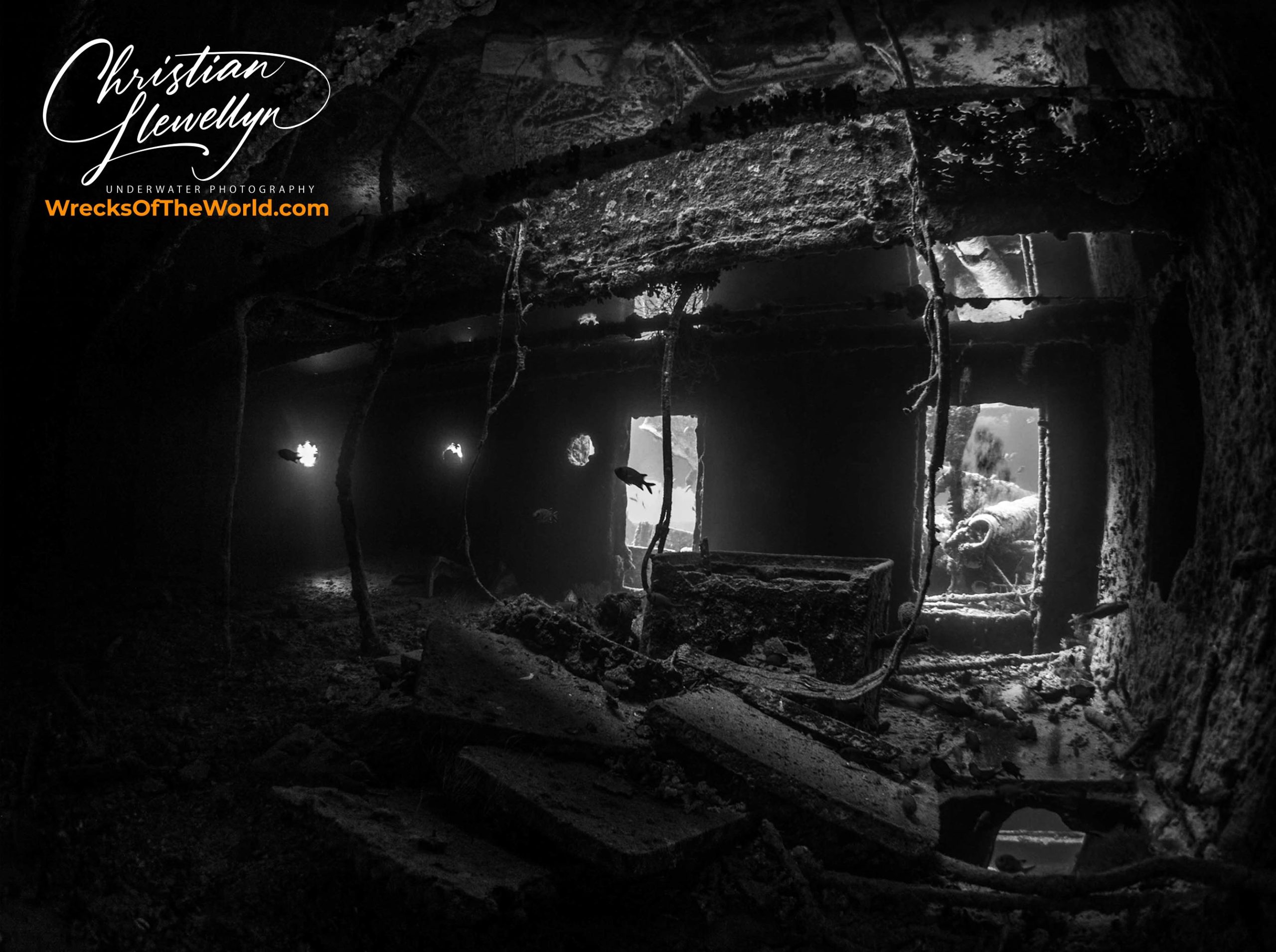
My journey to dive the famous SS Thistlegorm started with the excitement of exploring one of the most acclaimed wreck sites in the world, nestled in the Red Sea. The dive company operating the tour was professional and well-versed in the history and intricacies of this particular dive, ensuring all divers were briefed thoroughly about the dive conditions and the importance of respecting the integrity of the wreck site. Entry was via a backward roll from a zodiac, an exhilarating start to the dive!
Descending towards the SS Thistlegorm, the visibility was great, allowing for a clear view of the impressive structure as it loomed out of the deep blue. Diving around the wreck, there were noticeable bullet holes and other damage, a stark reminder of the ship’s involvement in historical warfare. Exploring the cargo, including motorcycles, trucks, and train carriages, was like touching a piece of history frozen in time under the sea.
The dive concluded with a smooth ascent and safety stop, following which there was a brief surface interval before heading back. The conditions were favorable throughout, with mild currents that made navigation around the massive wreck manageable. This diving experience at the SS Thistlegorm was not only a dive into the Red Sea’s waters but also a dive back through time, illuminating the past through what remains underwater.
My Experience Photographing the SS Thistlegorm
Photographing the SS Thistlegorm wreck was an unforgettable experience, enriched by its vibrant marine life and the hauntingly beautiful remnants of history resting deep within the Red Sea. Utilizing a DSLR camera housed in a sturdy waterproof casing enabled me to capture high-resolution images despite the challenges posed by the wreck’s complex structure and varying light conditions. My most memorable moment was capturing a serene shot of a pair of lionfish drifting elegantly past the sunken motorcycle cargo, set against a backdrop of the ship’s twisted metal infrastructure.

What You’ll See: Wreck Features & Marine Life
When diving the SS Thistlegorm, you will encounter a treasure trove of marine life that has made the wreck its home. From schools of fish swimming through the expansive cargo holds to the vividly colored coral that has begun to claim this sunken piece of history as part of the sea’s natural landscape, the biodiversity is stunning. Barracudas, jackfish, and occasional turtles enhance the underwater spectacle, making SS Thistlegorm diving not just about the wreck but also about the thriving ecosystem it supports.
The historical aspects are palpable, with the wreck’s structure largely intact, offering a fascinating glimpse into its cargo and equipment. Each dive unfolds more of its stories, captured perfectly for those interested in SS Thistlegorm wreck photography. The best time to dive SS Thistlegorm is during the quieter months when fewer dive boats are at the site and you can truly appreciate the magnitude and beauty of this underwater museum without the crowds.

Recommendations for Diving the SS Thistlegorm
1. Acquire a general understanding of the specific wreck you are planning to dive, including its history and layout.
2. Confirm that you have the appropriate diving qualifications, such as PADI Advanced Open Water or a specialized wreck diving certification.
3. Use a dive guide who is familiar with the wreck’s intricacies and potential hazards.
4. Check all diving equipment thoroughly before the dive, particularly focusing on your air supply and buoyancy control devices.
5. Plan your dive with a clear entry and exit strategy, keeping the wreck’s structure and current water conditions in mind.
6. Maintain a safe distance from the wreck’s walls and overhead environments to avoid disorienting silt-outs.
7. Bring a reliable dive light to explore darker areas within the wreck more safely.
8. Always dive with a buddy, maintaining close visual or physical contact throughout the dive.
9. Heed depth and time limitations to prevent decompression sickness.
10. Be mindful of marine life that has made the wreck their habitat to avoid damaging the ecosystem.
Tips for Photographing the SS Thistlegorm
1. Use a good quality underwater camera housing to protect your equipment from the high pressure and saltwater environment.
2. Adjust your white balance manually to combat the blue-green color bias inherent in underwater photography at the SS Thistlegorm.
3. Equip yourself with external strobes or lights to illuminate the darker sections of the wreck and reveal vivid details.
4. Focus on wide-angle lenses to capture the enormity of the wreck and the surrounding sea life.
5. Plan to shoot during optimal lighting conditions, typically on sunny mornings, to take advantage of the natural light filtering down to the depths.
6. Be cautious of your environment – avoid disturbing the wreck or marine life, and be mindful of silt that can reduce visibility when agitated.
7. Explore varying angles and perspectives, such as shooting upwards towards the surface to capture the eerie silhouette of the wreck against the lighter water surface.
Practical Dive Info & Booking a Trip
For those planning to experience SS Thistlegorm diving, it’s beneficial to choose reputable operators like Red Sea Explorers and Aqua Divers Club, who are known for their emphasis on safety and sustainability. Dive packages typically range from £75 to £150, depending on the season and included services like gear rentals and guide expertise. Booking during the off-peak season (May to June or September to November) can often allow for better deals and less crowded dives. Conservation is key; always adhere to no-touch policies, maintain buoyancy control to protect the wreck and underwater life, and consider participating in briefings on the Thistlegorm dive site history and conservation efforts. This not only enriches your diving experience but also contributes to the preservation of this magnificent wreck for future generations.
My Rating & Final Thoughts
Diving the SS Thistlegorm was an unforgettable experience, perfectly encapsulating why wreck diving in the Red Sea is considered one of the world’s best. The historical significance of the Thistlegorm, coupled with its abundant marine life and fascinating artefacts, makes every dive not just an exploration, but a dive back in time. The condition of the wreck, the clarity of the water, and the careful balance of adventure and conservation that the diving operators maintained, all contributed to a phenomenal diving experience. Every moment spent on the SS Thistlegorm site brought its own unique awe and respect for the maritime history it represents.
8/10
Frequently Asked Questions (FAQs)
The best time to dive the SS Thistlegorm is from May to September when the water conditions are calmest and visibility is optimal. During these months, the water temperature is warmer, ranging from 26 to 30°C (79-86°F).
Divers can expect a rich variety of marine life around the SS Thistlegorm, including schools of barracuda, tuna, and lionfish. The wreck also hosts large moray eels, and occasionally, eagle rays and turtles are spotted.
The diving conditions at the SS Thistlegorm include moderate to strong currents and an average depth of around 30 meters. The visibility can range from 15 to 30 meters depending on the time of year and weather conditions.
A minimum of an Advanced Open Water Diver certification is recommended for diving the SS Thistlegorm due to its depth and complex structure. Specialty certifications like Wreck Diver or Deep Diver are also beneficial.
Divers should follow standard safety procedures including checking equipment before the dive, following dive guides, and obeying dive limits and no-decompression limits. Due to overhead environments in the wreck, proceeding with caution and avoiding enclosed spaces without proper training is crucial.
The SS Thistlegorm is a British armed Merchant Navy ship that was sunk in 1941 during World War II by a German air attack. It holds a fascinating array of wartime cargo, including motorcycles, trucks, and train carriages, which make it a significant site for historical dives.
Divers are recommended to use a standard scuba setup with a dive light to explore the darker areas of the wreck. A redundant air supply like a pony bottle or a sidemount configuration may be advisable for penetration diving.
It’s best to choose operators who have good safety records and in-depth knowledge of the local dive sites. Operators based in Sharm El Sheikh often offer regular trips to the Thistlegorm, equipped with experienced guides who are familiar with the wreck.
Diving the SS Thistlegorm can be a moving experience, owing to its historical context and the visible remnants of the wartime cargo. Many divers feel a mix of awe and respect when exploring this piece of living history.
Divers should practice responsible diving by not touching, taking, or displacing any part of the wreck or its contents. Maintaining neutral buoyancy to avoid stirring up silt and preserving the site for future divers is crucial for responsible exploration.
Some of the links on this page may be affiliate links. If you click on them and make a purchase, we may earn a small commission at no extra cost to you. This helps us continue our work—thank you for your support!


